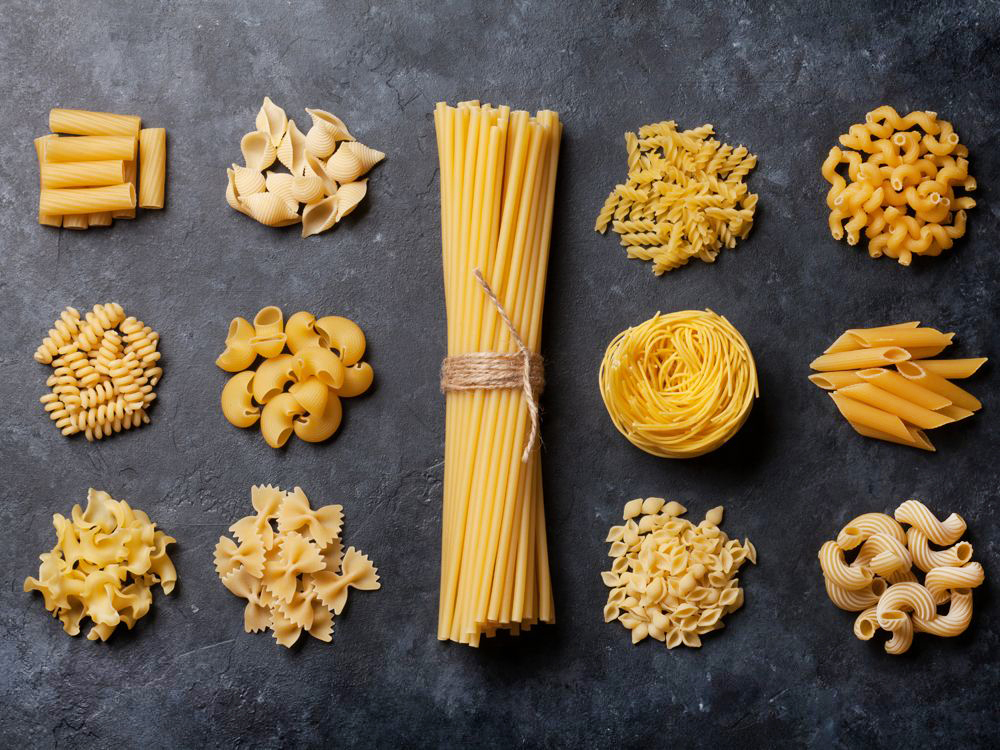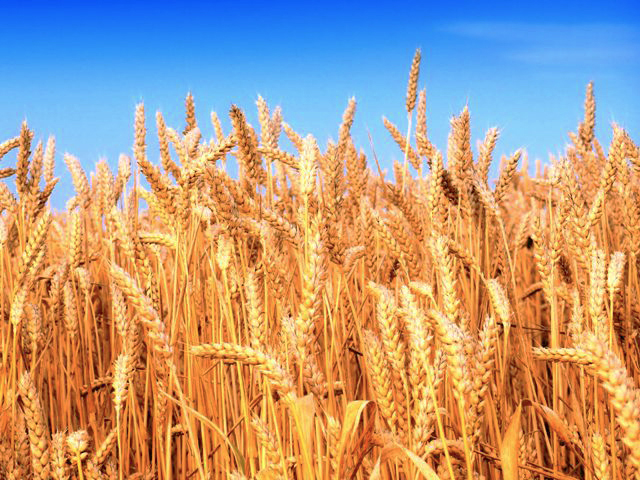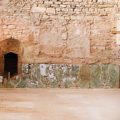When talking about pasta, it is important to first define the term. Pasta describes traditional Italian noodles, which separates it from other types of pasta around the world; in fact, we shudder to use the word “noodle” at all! Pasta is made from unleavened dough consisting of ground durum wheat and water or eggs. The use of durum wheat sets pasta apart from noodles. Durum wheat has been growing in Sicily since the time of the Roman Republic and during the Middle Ages, became the ingredient of choice for the pasta’s flour. When durum wheat pasta is dried, it lasts indefinitely, making it very convenient to store for long periods of time.
The earliest pasta shape would have been a simple sheet, which was treated more like bread dough. For pasta that was dried and then boiled in water, the first shape might have been something like acini de pepe, since the little balls could be made simply by hand. The earliest forms of pasta that are now recognized by people around the world, such as linguine and spaghetti, were first produced in Italy in the ninth century. Spaghetti, which means little strings, was easy to make and dry in the climate of southern Italy. The thin pieces were initially cut from sheets using knives. Almost all of the earliest shapes were probably formed by hand, a tedious process, so people worked on making their production more efficient as pasta gained importance in their diets.
The process of making pasta was refined over time in Italy. The warm Mediterranean climate of Italy is suited to growing fresh vegetables and herbs, which meant that Italians could get very creative with a delicious variety of sauces and pasta. They became firmly rooted in Italian culture long before Columbus brought tomatoes back from the New World.
What really sparked the explosion of pasta shapes was the invention of the extrusion press. Versions of an extruder had been experimented with since the 1300s, but it took the revolution in mechanics of the Renaissance to allow the machines to quickly mass-produce pasta, including shapes like rigatoni, tagliatelle and elbow macaroni. (Note: Macaroni is a term Italians use for just one shape, a longer thinner shape of ziti and they call it Macaroni).
Stiff pasta doughs made from semolina could be worked in large quantities by machines not possible by manual production. These doughs were then extruded through bronze dies that yielded the style of pasta that is familiar to all. Bronze was hard enough to be durable but soft enough to be easily worked using pre-Industrial Revolution technologies.
The introduction of machinery powered by steam in the 1800s made the process of extruding pasta even more efficient. As factory-made pasta caught on with the public, Italian manufacturers’ quickly added pastas of various shapes and sizes to their repertoire. In time, fantastic shapes were created, often with the intent to create a unique pasta that would cook to a perfect al dente and also hold sauce, hence the word ‘rigate,’ which is ridged on pasta like penne rigate or the smooth version which is called penne lisce.
Marble Cutting in the Ancient World
The United States was slow to adopt most of the wide variety of pasta shapes common in Italy, despite the fact that Founding Father Thomas Jefferson was a major proponent of pasta. He even owned a pasta maker at his home in Monticello, at the behest of his friend Filippo Mazzei.
The earliest Italian immigrants to America came from the northern regions of the peninsula, but their overall numbers were small. The first documented pasta factory in America was established in Brooklyn in 1848 and by the time of the Civil War, pasta was fairly common on American tables, though most often it was a form of flat pasta, such as fettuccine.
American pasta consumption began to surge following the great arrival of nearly four million Italian immigrants to the United States between 1880 and 1920. This is when many of the pasta dishes Americans are familiar with today became popular. It was not until the Italian food boom of the 1970s and 80s that Americans became familiar with the vast number of pasta shapes, sizes, sauces and fillings that were common in Italy. Today, pasta is one of America’s favorite foods, so in fairness to cascatelli, when it comes to pasta shapes, there is always room for one more.






